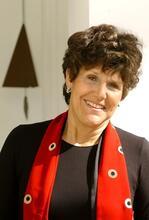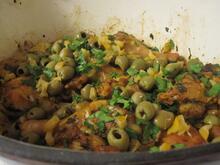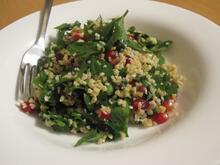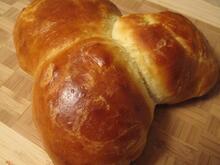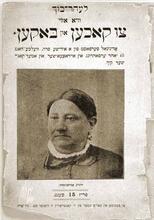Joan Nathan
Described as the woman “who connects Jewish cooking the world over,” award-winning journalist and cookbook author Joan Nathan has been a transformative figure in documenting and exploring the evolving Jewish experience, in America and around the globe, through the powerful lens of food. With a compassionate ear for family and community narratives, her recognition of the communicative power of the table, and her savvy and skill as a veteran investigative reporter, Nathan has brought a deep understanding of Judaism and Jewish culture to a massive readership at the intersection of flavor, religion, and history. Nathan is a long-standing contributing writer to The New York Times and Tablet Magazine and is the author of eleven books, as well as hundreds of articles, podcasts, interviews, and public presentations about Jewish, global, and American foodways.
Early Childhood, Family, and Education
Born in Providence, Rhode Island, on January 26, 1943, Joan Nathan was raised in the quintessential American Jewish experience of an upper-middle-class family negotiating assimilation, modernity, and the pull of ancestral ties to Europe. Ernest Nathan (1905-1991), Joan’s father, was a native of Augsburg, Germany, who immigrated to Warwick, Rhode Island, in 1929 as a young chemical engineer aware of “what the rising tide of nationalism would mean for Jews in Germany” (Carman). He returned to Germany and convinced his parents to join him in America in the early 1930s. A great aunt perished in the Theresienstadt concentration camp.
Nathan’s grandparents on her mother’s side, Martha and Henry Gluck, immigrated from Slovakia and Poland in the late 1870s, and like thousands before them, first settled on the Lower East Side of New York City, where they operated a dress and millinery shop on Madison Avenue. Pearl Gluck Nathan (1913-2017), Joan’s mother, was born in New York City. She graduated from Barnard College; a lover of art and the Rhode Island School of Design Museum, she taught English at Barrington High School and later in life was a diligent proofreader of her daughter’s book manuscripts.
Joan’s parents, Ernest and Pearl, met in Connecticut at one of the region’s storied summer resorts that catered to Jewish families. They married in 1937 and had three children. A business opportunity brought them to Larchmont, New York, where they lived between 1946 and 1956, when they moved back to Providence.
Nathan’s interest in Jewish food cultures was inspired by her German Jewish family, including her father’s sister Lisl, who lived nearby in Cranston, Rhode Island, and by her discovery of handwritten nineteenth-century family recipe books brought from Germany and a miniature Bavarian kitchen she played with as a child.
The family’s table in both Larchmont and briefly later in Providence was overseen by Susie Marbry, an African American cook and housekeeper whose roots were in the American South. Nathan recalls their weekly schedule of 1950s-era dinner entrees, from liver to tuna fish casserole to roast chicken. “The meal was always something you made beautiful,” remembered Nathan. “My mother always had pretty flower arrangements on the table. Meals were a time that you could get together, you could talk, and they were important” (Interview with Deborah Ross). Jewish holidays at the Nathan home included brisket with farfel and a sweet potato tsimmes, “Americanized” with pineapple and marshmallows. At Passover, chremsel was served, a German-style fritter filled with nuts and dried fruit loved by Joan’s father, who fondly remembered the dessert from his childhood. A well-marked 1936 edition of The Settlement Cookbook, a wedding gift, was a frequent text shared with Susie Marbry for instruction in central European Jewish dishes such as blintzes, borscht, and “stuffed cabbage”—chopped beef rolled in cabbage leaves. Although her mother cooked infrequently, Joan Nathan described how Pearl became “a fine cook,” recalling the occasional meals and treats she prepared, such as a beef stew each Thursday on “maid’s night off,” a plum kuchen for the High Holidays, and “Aunt Eva’s butter cookies.” Family Sunday night supper was often at a local Chinese restaurant. Pearl and Ernest Nathan took their children to explore the excellent restaurants, bakeries, and delicatessens in Providence’s historic Portuguese and Italian neighborhoods. A class in home economics in the sixth grade was a favorite of Joan’s, who liked its combination of fudge-making and math.
Nathan’s Jewish upbringing included her father’s lifelong support of Jewish and Israeli causes, including serving as president of Temple Beth-El in Providence. In 1950, Pearl Nathan edited a popular fundraising cookbook for the Larchmont Temple, “Regard Thy Table,” from which her daughter published the recipe for “Exciting Noodle Kugel” in a The Jewish New Year, held on the first and second days of the Hebrew month of Tishrei. Referred to alternatively as the "Day of Judgement" and the "Day of Blowing" (of the shofar).Rosh Ha-Shanah food column for the New York Times in 2015 (“A Kugel to Savor). (Instead of raisins and sugar, the savory kugel included onions, garlic, and the iconic ingredients of Worcestershire and Tabasco.) Joan and her siblings participated in “NFTY”—the National Federation of Temple Youth, an organization of the Union for Reform Judaism. Her first trip to Israel in the summer of 1970 was a life-changing experience, as it was for many American Jews of this era. “I discovered who I was there,” said Nathan.
Nathan graduated with a bachelor’s and master’s degree in French literature from the University of Michigan in the late 1960s. Her Master’s thesis, written in French, examined the image of the biblical heroine Esther in the work of Marcel Proust. Nathan watched as youth headed South to work in the nascent civil rights movement, while she and her sorority sisters “stuffed envelopes” at Students for a Democratic Society (SDS), a national student activist organization founded in Ann Arbor.
Forging a Career and a Life in Journalism and Food Writing
In 1973, Nathan returned to Israel, where she worked as foreign press attaché for Mayor Teddy Kollek in Jerusalem. The position gave her unparalleled access to the region as she introduced members of the foreign press to what Kollek described as the city’s “mosaic of people.” Much strategic diplomacy happened over meals in the city’s diverse neighborhood restaurants. Nathan realized that her journalist colleagues talked solely about politics, while missing the important relationships, stories, and history found in Jerusalem’s vibrant food cultures. Nathan co-authored a cookbook, The Flavor of Jerusalem, with Judy Stacey Goldman (Little, Brown 1975). With this professional turn, she opened a door into food writing and journalism that would later bring her byline to the rapidly expanding food sections of the Boston Globe, the Washington Post, and the New York Times.
In the 1970s, Nathan honed her writing skills in newsrooms, educational organizations, embassies, and work for two New York City mayors, John Lindsay and Abraham Beame. In 1973, she was a co-founder of New York City’s Ninth Avenue International Food Festival, which brought attention to one of the city’s most diverse ethnic neighborhoods, Hell’s Kitchen, on the West Side of Manhattan.
In 1974, Nathan married Allan Gerson (1945-2019), whose budding career in international law was growing in powerful directions that complemented Nathan’s work. (The two met at a protest in the early 1970s organized by a mutual friend near the Western Wall in Jerusalem.) In Boston, Nathan completed a master’s degree in public administration at Harvard’s Kennedy School, where she also enrolled in food studies classes, sociologist Nathan Glazer’s course on ethnicity, and historian Oscar Handlin’s class on the history of the city. The young couple had three children, Daniela, Merissa, and David. In the years that followed, Allan Gerson, a child of Uzbek Jewish refugees from the Holocaust, taught law, prosecuted Nazi war collaborators, represented victims of the 1988 Lockerbie bombing of Pan Am flight 103 in lawsuits that held Libya accountable, and worked for Ambassador Jean Kirkpatrick at the United Nations.
Nathan’s reputation as an excellent writer, intrepid researcher, and documentarian was already forged when she published her first book on Jewish foodways, The Jewish Holiday Kitchen (Schocken, 1979). She also wrote extensively on American ethnic identity through its diverse food cultures in books like An American Folklife Cookbook (Schocken Books, 1984), which “recorded living traditions” of America’s culinary heritage from Rhode Island to Washington State. More of Nathan’s literary canon on Jewish cuisine followed as she explored Jewish food worlds from France to modern Israel. Jewish and non-Jewish readers around the world value her iconic works, which blend Jewish history, stories of the Jewish diaspora, and evolving contemporary Jewish cuisines and food cultures around the world. “I never thought I would be what I am. I loved to study and learn,” said Nathan. “I often thought I should have gotten a Ph.D. in anthropology. Each book was like a research paper” (Interview with author).
In the late 1980s, Nathan published her first articles in the New York Times, including a 1987 piece on the rich immigrant food traditions of Hibbing, Minnesota, in the Mesabi iron range. (The recipes for a Yugoslavian potica—a jellyroll-style pastry—and Mary Perpich’s Apple Strudel required a table or flat surface at least 3 feet x 5 feet and a clean sheet to hang over the sides [Sarma and Strudel].) Nathan’s association with the New York Times has continued for more than thirty years. Her articles signal the Jewish holidays, always introducing readers to the history of a special ingredient, a close study of a particular Jewish community or individual, and a new or changing Jewish food scene. Readers paid close attention when Nathan reported it was permissible to eat legumes and to use leavening agents like baking soda and baking powder during A seven-day festival to commemorate the Exodus from Egypt (eight days outside Israel) beginning on the 15th day of the Hebrew month of Nissan. Also called the "Festival of Mazzot"; the "Festival of Spring"; Pesah.Passover (“It’s Passover, Lighten Up). Over 770,000 people read Nathan’s article on the new and improved “Genius Method for Making Latkes,” and their comments ranged from “These latkes are goyishe!” to “Thank you. I just made my best latkes ever!” After 9/11 in 2001, the food editor at the New York Times turned to Nathan for a last-minute piece for the Rosh Hashanah holiday. What could one write after such destruction and horror? Nathan contemplated the challahs she had just baked for the Sabbath:
This week, with its chasm of tragedy, lends a special poignancy to making an object of common comfort. Challah, formed into a circle for the hope that the New Year will lead to a more heavenly period, is usually eaten in a group, with the traditional blessing before the meal, giving thanks. As I look at my own Rosh Hashana table with the circular challah in the center, I think of all these women whose lives were marked by tragedy, but found solace in the act of baking challah and sharing it with others (“A Challah of Prayers and Memories).
In the late 1980s, Leo Lerman, an acclaimed editor and writer with Conde Nast Magazines, invited Nathan to lunch in New York City. At this important meeting, Lerman predicted Nathan would write for Gourmet magazine (a Conde Nast publication), Susan Lescher would become her agent, and Judith Jones her new editor. Jones was a much respected, brilliant editor at Knopf, known for advancing the work of a generation of culinary writers, including Julia Child, as well as for her sharp eye when she encouraged Doubleday to publish the powerful diary of Anne Frank in 1952. Jones met with Nathan to propose a book on American Jewish food for the Knopf Cooks American series: “She wanted me to write a book showing how Jewish immigrants influenced American food and how America influenced Jewish food. I signed on right away” (“Judith Jones Got the Best Out of Her Authors”).
Nathan’s Jewish Cooking in America (Knopf, 1994) received the International Association of Culinary Professionals’ Julia Child Award for best cookbook of the year, as well as the James Beard Award in the category of Food of the Americas. This groundbreaking work is an essential study of American Jewish food cultures that charts their chronology, immigrant origins, stories of entrepreneurship and innovation, family narratives, and cherished recipes. Researching this volume in a pre-internet era, she wrote to editors of the Jewish press in the United States, including Hadassah Magazine, and asked them to publish her query for food-related stories. They did, and she incorporated these stories into her book.
While working on Jewish Cooking in America, Nathan was a research fellow at the American Jewish Archives, where she worked with the distinguished American Jewish historian Jacob Rader Marcus. Peggy Pearlstein, head of the Hebraic section at the Library of Congress, provided important counsel. Nathan traveled extensively across the country, conducting interviews and exploring archives, including the Yiddish Book Center in Amherst, Massachusetts, where she found Yiddish food ads that became the evocative end papers of the book. As she and her children surveyed the massive collection of books at the Center, she instructed them, “This is what the game is: You don't have to understand the Yiddish, look for food” (Interview with author).
Jewish Cooking in America with Joan Nathan, Season 1, Episode 1. Maryland Public Television, 1998.
Jewish Cooking in America developed into a James Beard Award-nominated series by Maryland Public Television in 1998, produced by Joan Nathan and Charles Pinsky. With Nathan as the series host, viewers had a front seat to Jewish historic sites and iconic food businesses and venues. She visited with celebrities (from actors to journalists to political leaders), renowned chefs, food writers, and home cooks, all of whom shared their stories and special dishes as part of the vast arc of American Jewish foodways. The legendary Klezmer clarinetist and bluegrass mandolin player Andy Statman wrote the original theme music for the series. Throughout the series, Nathan explored the foundations of Jewish food in the United States, from “what is kosher?” to the origins of cheesecake and egg creams. Most poignantly, she honored survivors of the Holocaust whose food stories spoke of Jewish resilience and resistance. “From each of these people, you really learned a lot about how to be a decent human being in life. I learned from each of them,” said Nathan (Interview with author).
In a productive working partnership of editor and writer that lasted over twenty-five years, Judith Jones and Joan Nathan created a unique body of work that introduced readers to both global Jewish cuisine and the multilayered, changing foodways of America. In 2001, Nathan was inducted into the James Beard Foundation’s Who’s Who in American Food and Beverage. In 2015, Les Dames d’Escoffier made her a Grande Dame, to recognize her achievements in food journalism.
“I’m always looking for the next subject to write about”
Keynote: Jewish Food in the Global South from UNC Jewish Studies on Vimeo.
Joan Nathan continues to be an active journalist, writer, and much sought-after speaker—and a grandmother. Her adult children are a professor/journalist, an educator/writer, and a filmmaker/actor. Within the rapidly evolving contemporary Jewish food movement shaped by the politics and activism of sustainable food systems, racial equity, and environmental stewardship, Nathan is in constant conversation with the new generation of American Jewish food writers, chefs, entrepreneurs, farmers —and readers.
Selected Works by Joan Nathan
The Flavor of Jerusalem, co-authored with Judy Stacey Goldman. Boston: Little, Brown and Company, 1975.
An American Folklife Cookbook. New York: Schocken, 1985.
Jewish Holiday Kitchen. New York: Schocken, 1988.
Jewish Cooking in America. New York: Knopf, 1994.
The Children’s Jewish Holiday Kitchen. New York: Schocken, 1995.
The Jewish Holiday Baker. New York: Schocken, 1997.
The Foods of Israel Today. New York: Knopf, 2001.
Joan Nathan’s Jewish Holiday Cookbook. New York: Schocken, 2004.
New American Cooking. New York: Knopf, 2005.
Quiches, Kugels, and Couscous: My Search for Jewish Cooking in France. New York: Knopf, 2010.
King Solomon’s Table: A Culinary Exploration of Jewish Cooking from Around the World. New York: Knopf, 2017.
Brennan, Patricia. “With a Story on the Side.” Washington Post, September 20, 1998; https://www.washingtonpost.com/archive/lifestyle/tv/1998/09/20/with-a-story-on-the-side/86fab4ea-b355-4739-bc9f-3c79aa7fcd06/
Carman, Tim. “Who Connects Jewish cooking the world over? The whirlwind named Joan Nathan.” Washington Post, March 24, 2017. https://www.washingtonpost.com/lifestyle/food/who-connects-jewish-cooki…
“Chicken Soup: The Story of “Jewish Penicillin.” CBS Sunday Morning, March 25, 2021, https://www.cbsnews.com/news/chicken-soup-the-story-of-jewish-penicillin/
Gerson, Daniela. Opinion, Guest Essay: “My Grandparents’ Immigration Lies Shaped My Father’s View of Justice.” New York Times, April 26, 2021, https://www.nytimes.com/2021/04/26/opinion/dreamers-undocumented-immigration-holocaust.html
Gerson, Merissa Nathan. “Modern Love: My Unlikely Pandemic Dream Partner.” New York Times, January 22, 2021, https://www.nytimes.com/2021/01/22/style/modern-love-my-unlikely-pandemic-dream-partner.html
“Jewish Cooking in American,” Maryland Public Television, 1998; https://www.youtube.com/playlist?list=PL7w5W-J7JJPciXsAEvt9ZgwvAg2u22hu-
Joan Nathan articles/cooking videos for Tablet Magazine https://www.tabletmag.com/contributors/joan-nathan
Nathan, Joan. Interview with Judy Woodruff: “How Jewish tables around the world serve a feast of traditions.” PBS NewsHour, April 7, 2017; https://www.pbs.org/newshour/show/jewish-tables-around-world-serve-feast-traditions
Nathan, Joan. interview with Deborah Ross, Jewish Women’s Archive, July 12, 2011, https://jwa.org/exhibits/dc/nathan-joan
Nathan, Joan. Interview with Kim Severson (NYT), Keynote session, Jewish Food in the Global South Conference, Carolina Center for Jewish Studies, UNC-Chapel Hill, March 5, 2017; https://vimeo.com/user4784851
Nathan, Joan. “A Kugel to Savor for Rosh Hashana.” New York Times, August 31, 2015, https://www.nytimes.com/2015/09/02/dining/a-kugel-to-savor-for-rosh-has…
Nathan, Joan. Interview with Marcie C. Ferris, April 16, 17, 2021.
“Passover: Traditions of Freedom.” Maryland Public Television, April 1, 1995, https://video.mpt.tv/video/passover-traditions-of-freedom-v0tgjv/?fbclid=IwAR3qmyY6vVHxkcMnjMmxw58rIWk1LJVcpSfgV8J9H8yMV6F9D7muM4FekLc
Nathan, Joan. “Sarma and Strudel.” New York Times, February 25, 1987, https://www.nytimes.com/1987/02/25/garden/sarma-and-strudel.html
Nathan, Joan. “It’s Passover, Lighten Up.” New York Times, April 5, 2006 https://www.nytimes.com/2006/04/05/dining/05leav.html
Nathan, Joan. “A Challah of Prayers and Memories.” New York Times, September 19, 2001 https://www.nytimes.com/2001/09/19/dining/a-challah-of-prayers-and-memo…
Nathan, Joan. “Judith Jones got the best out of her authors. I know: I was one of them.” Washington Post, August 4, 2017, https://www.washingtonpost.com/lifestyle/food/judith-jones-got-the-best…



